There is nothing like a crisp, cool-white LED strip light bringing illumination to a kitchen counter, helping chefs and cooks with food preparation, making it look glorious, and the colors well rendered.
But after a few months of use, the sharp blue-white of the LED strip can turn yellow, fade away, or your strip might have all different colors showing. What causes that, and how do you fix it?
LED strip lights can lose their color temperature or vibrancy due to overheating, damage to the strip, or just because they were manufactured poorly. Strips with different colors can also be caused by a faulty or insufficient power supply, which can easily be fixed.
In this guide, we’ll take a look at:
- The main causes of LED strip lights having color issues
- What can cause white LED lights to turn yellow
- Why some lights may be a different color from the rest
- How to fix your LED strip lights that are different or wrong colors.
Four Main Causes Of Discolored LED Light Strips
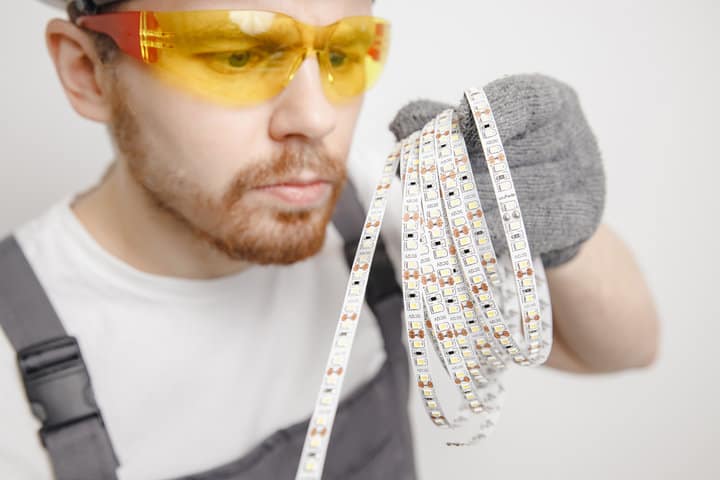
The three main causes of discolored LED strips are:
- Overheating (due to the wrong power supply or poor ventilation)
- Bad-quality LED strips that fail quickly
- A faulty power supply that isn’t providing enough power.
- Paint covering the strip
Let’s explore each of them in depth.
LED Strips Are Overheating
LED light strips – and indeed LED lights in general – don’t like heat. Unlike older lighting types, LEDs will suffer poorly if they get too hot. Overheating LED strips have a short lifespan and can potentially be a fire risk – and because it damages them, it can affect their color.
You need to make sure that there’s good air ventilation around your LED light strip and that it has sufficient heat dissipation in place.
Some good manufacturers will include adhesive tape for your LED light strips that has cooling properties.
The tape has ceramic particles that can wick away heat from the strip and dissipate it away from the sensitive light emitting diodes.
Following that are casings and conduits that house LED strips and are optional features that can significantly decrease overheating.
These aluminum channels act as a heat sink and help to cool the strip due to the metal’s conductive properties.
If you are serious about making your LED strip setup last in a professional setting, installing aluminum channels will prevent overheating and make your LEDs last a long time.
Finally, the surface and position you mount your strips will make a big difference.
Our first choice is usually under cabinets, beds, or other furniture. Wood is quite insulating and retains the heat from the strip, which can cause it to significantly heat up.
If you have an option, mounting the strip lights on metallic or ceramic surfaces will greatly help heat dissipation.
Placing them in tight or heated places in the house, such as next to the stoves or other electronics like the TV or consoles, will raise the ambient temperature in which the LED has to function.
This, again, can damage the LEDs and cause the colors to fade or dim.
Poor Quality LED lights
Another reason why you might have LED strip lights that are different colors from their intended shade could just be because you’ve bought low-quality lights.
LED strip lights are cheap to make, and so are often mass-produced by manufacturers who don’t put as much care into them. This can leave you with sensitive diodes that aren’t going to last, no matter how well you care for them.
Always try to make sure you buy a recognized brand for your strip lighting system if you want to stop the LED strips changing colors or fading too quickly.
Failing Power Source
Part of the reason you sometimes get strip lights that are different shades from their intended color is that you don’t have a sufficient power source, or it has failed.
A supply needs to match the voltage of the strip. If it’s not powerful enough, you will get faded LED lights on your strip that won’t improve.
But don’t overcompensate and get a supply that’s too powerful. That’s dangerous too and can fry your strips.
Paint In Circuits
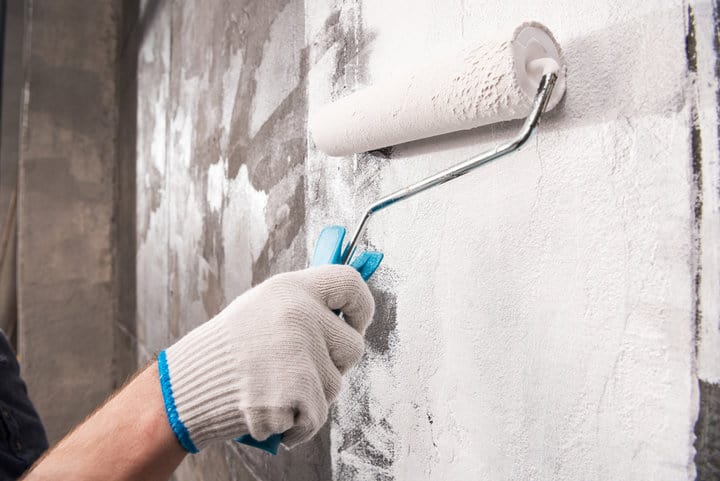
There is another, uncommon reason why your LEDs may not be working properly and may show the wrong shade. You may have accidentally got paint over them!
Lighting professionals have seen this time and time again – once people have installed their LED strip light setups around the house or office, they may paint it then or later.
Here is a video showing what an LED strip looks like with different colored lights.
Even if the tiniest speck of paint falls on the diode, it will emit light that looks dull, faded, or even a completely different color.
Keep your strips protected when you start a paint job and clean any existing paint off of them with paint removers to ensure full illumination.
One of the worst effects of getting paint over your strip light is that some could actually go inside the circuitry or wiring.
In this case, it could completely short or damage the strip, making it flicker, or have unexpected color changes, or simply stop working.
Why Do LED Strip Lights Turn Yellow
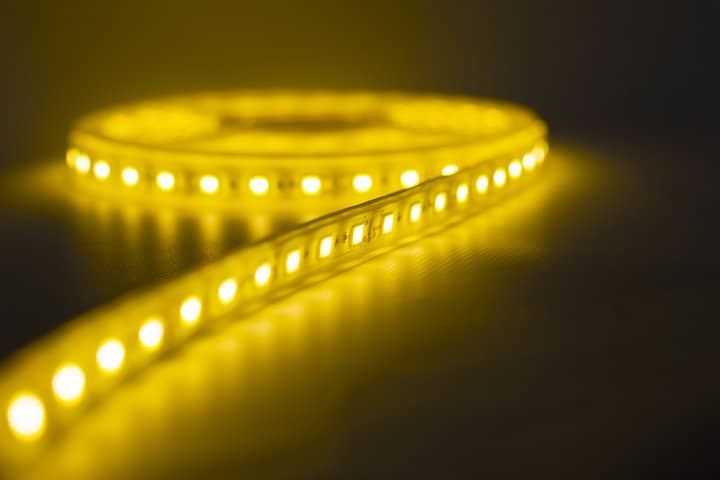
The epoxy coating of the diodes can fade and cause white lights to appear yellow. It can also be caused by underpowering your lights – multiple strips should be wired in parallel, not in series, to prevent this.
All LED lights have some form of epoxy coating on them.
High quality LED lights will have a coating that will last as long as the lights, but if you use cheap strip lights in your lighting setup, that epoxy can discolor and affect your light color.
Specifically, the encapsulant starts to turn yellow with use and age and eventually brown! It is usually the cheaper 5mm LED plastic packages that have this issue.
Surface-mounted LEDs encapsulated in silicone or glass do not usually have this yellowing problem.
Another common mistake that causes overheating, and significant yellowing of LEDs that are supposed to be bright blue-white, is when they set up the connections a little wrong.
It is smarter to hook up LED strips in parallel instead of in series so that all the current does not have to go through the first part of the strip.
It is for this reason that the LEDs closest to the power supply start getting damaged first, causing that yellowing.
If you’re going to run multiple strips, make sure your LED lights are wired in parallel instead of chaining strips together.
Why Are Half Of My LED Lights A Different Color
If half your LEDs on a strip are showing as a different color, this could be due to overheating from a bad power source, it may be caused by voltage drop, or it could be faulty wires within RGBW LED strip lights.
If the lights that are different colors are random and all across the strip, it’s likely overheating.
Try to make sure you’re getting cooler air to the strips, to avoid too much heat damaging them.
If poor air ventilation isn’t the issue or can’t be avoided, use aluminum casings or channels for better heat dissipation.
The lights that are different colors are further from the power supply, it means you’ve got a voltage drop issue. You’ll need to rewire the strips.
Sometimes the voltage or current from one power supply is not to power the entire length of a long LED strip. In that case, it is better to supply power from two opposite ends of the strip.
If most of the LED lights on a strip are working fine, but a section isn’t, then there might be a damaged or broken connection in the strip that you need to locate. One damaged chip can cause an entire section of the light to malfunction.
This damage can be caused by the previously discussed overheating, as it is the most common issue.
Another reason is that sometimes, even if one diode is not working, the section doesn’t light up even though other diodes work fine.
In that case, you can look for the damaged or dime diode, replace that diode, and ta-da!
Your entire section should light right back up again. That is because that diode has broken the circuit, so fixing it usually fixes the whole strip.
How To Fix LED Lights When Colors Are Wrong

If the colors on your LED strips fade further from the power supply, you’ll want to change the wiring to power them in parallel. If a part of the strip is damaged and showing the wrong colors, you can cut it out and re-connect the working parts.
When the LED lights are overheating, you’ll need to install a heat sink channel, and try to stop warm air from settling around the lights.
When the colors fade across the length of the light strip, either add a second power supply for the further strip sections or run multiple strips from the same supply in parallel instead of chaining them together.
If you need to remove a broken section of your strip with different LED light colors, cut along the lines and then connect the working sections together.
Troubleshooting Different Colors of Govee LED Strip Lights
If you’re using Govee strip lights and the colors aren’t right, there are more fixes you can try. Check the battery in the remote for the lights, and reset the strip light – hold the power button on the supply and then press the middle button four times.
Govee lights can be controlled via your remote or smartphone, but sometimes the connection can fail, which causes the lights to show the wrong color despite what you’ve set it to.
Sometimes it’s not the lights at fault but the controller. So check the battery in the remote, and restart your smartphone to see if that fixes it.
Otherwise, resetting the light strip should work. If the soft reset doesn’t fix it, unplug the strip lights for 10 seconds before powering them back up. That should solve it.
Final Words
With these tips and tricks under your belt, you can tackle yellowing, unlit, and randomly colored LED strip lights around your home or office.
Whenever you want to fix LED lights or indeed any lights, start by working out what’s causing the problem – the solution should then be clear.
If you’re just learning before installing your own strip lighting system, and want to know more, check out my ultimate guide with everything you need to know about strip lights.

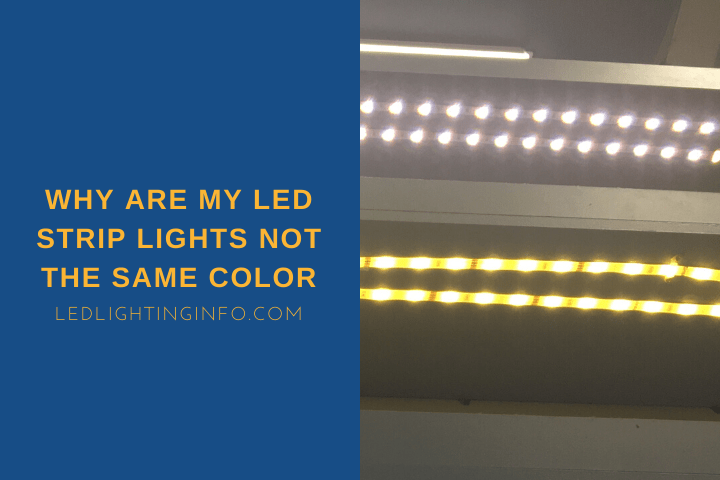

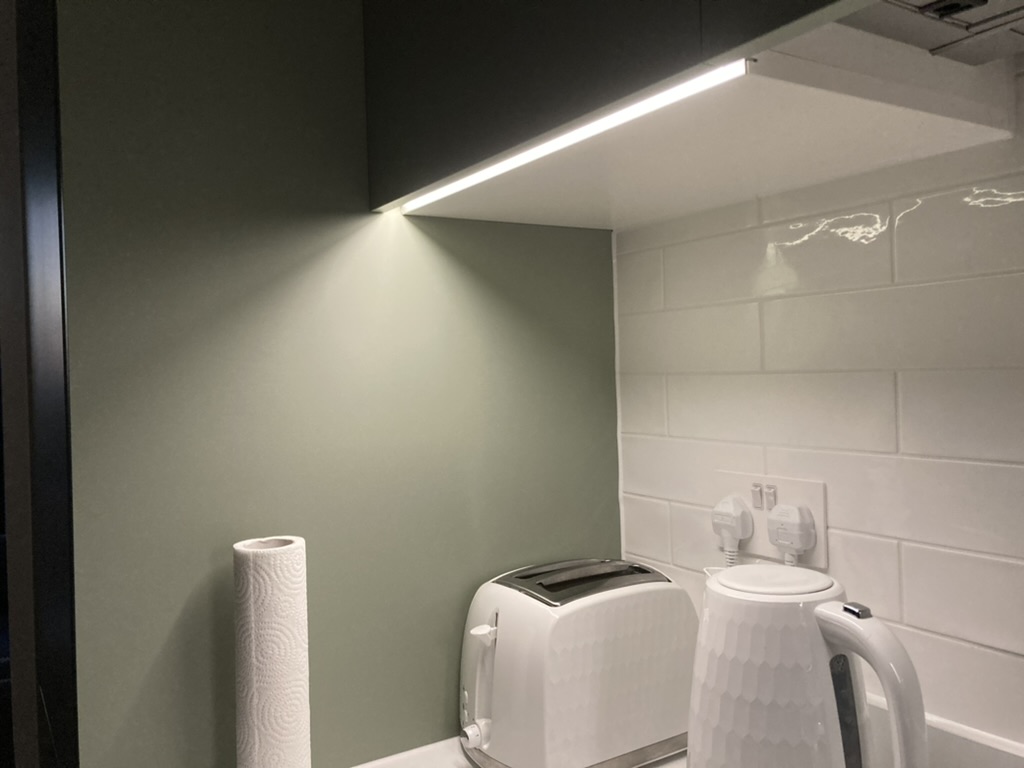
Comments are closed.